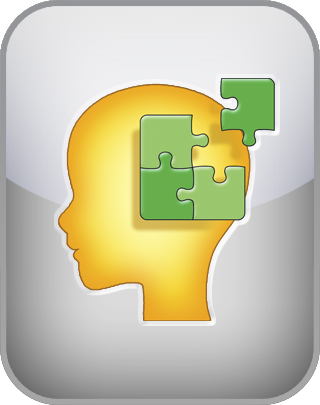Academically reviewed by Dr. Jennifer Schulz, Ph.D., associate professor of psychology
Child Autism Test
Based on the work of Dr. Catherine Lord
According to the CDC, one in 36 (or 2.8%) of 8-year-old children has been diagnosed with an autism spectrum disorder (ASD). The government figures indicate that the prevalence of child autism is on the rise.
Children with autism have a neurodevelopmental condition that affects their social interactions, communication skills, and behavior. As a consequence, children with autism often struggle. This test is based on the Autism Diagnostic Observation tool, which is often used to screen for indications of autism in children.
To take the test, indicate your response to each of the statements below.
Question 1 of 46
My child gets excited about marriages and birthday parties and often has a lot of fun.
| Disagree | Agree |
NEXT
The IDRlabs Autism Test for Children (IDR-ATC) was developed by IDRlabs. The IDR-ATC is based on the work of Catherine Lord, PhD and colleagues who created the Autism Diagnostic Observation Schedule-Second Edition (ADOS-2). The IDR-ATC is not associated with any specific researchers or authors in the field of abnormal psychology, special education, or any affiliated research institutions.
The test uses the following scales:
Assiduous Observation: Children with autism often have remarkable attention to detail and may notice things that others overlook. They may focus intensely on specific objects, patterns, or details in their environment. Some children with autism have the ability to hyperfocus on a particular topic or activity of interest. This intense focus can result in a heightened level of observation and retention of information related to their specific interests.
Distanced Sociality: Children with autism may experience challenges in developing social skills such as initiating and maintaining conversations, understanding nonverbal cues (e.g., body language, facial expressions), and interpreting social norms. They may struggle with the give-and-take nature of social interactions and have difficulty understanding and expressing emotions. They may also have difficulties with the theory of mind, which refers to the ability to understand and attribute mental states, such as thoughts, beliefs, and intentions, to oneself and others. This can affect their ability to understand and predict the thoughts and feelings of others, leading to challenges in social interactions.
Peculiar Language: Children with autism often struggle with the social aspect of communication. They may have challenges in initiating and maintaining conversations, taking turns, understanding and using nonverbal cues (e.g., eye contact, gestures), and interpreting social context and expectations. Children with autism may have a tendency to interpret language literally and struggle with understanding humor, sarcasm, metaphors, and abstract concepts. They may have difficulty inferring meaning or understanding implied messages.
Sensory-Motor Peculiarities: Children with autism often engage in repetitive behaviors, such as hand-flapping, rocking, or repeating certain phrases. These behaviors can serve self-stimulatory purposes or help them regulate sensory input. Many children with autism thrive on routine and predictability. They may feel more comfortable and exhibit fewer behavioral difficulties when their environment and daily activities follow a structured and consistent schedule.
Restricted Interests: Children with autism often develop intense interests in specific subjects or activities. They may spend a significant amount of time and energy engaging with these interests, often displaying an extensive and deep level of engagement. They may have a strong preference for particular topics that may not be typical or age-appropriate for their peers. Children with autism may enjoy collecting and categorizing items related to their interests.
The Autism Test for Children is based on a well-known assessment for autism. However, free online tests and quizzes such as this one are solely first takes and cannot provide accurate assessments of your child’s condition. Hence, the test is intended to be used for educational purposes only. A definitive assessment can only be made by a qualified professional.
As the publishers of this free test, which allows you to screen yourself for the characteristics of each style, we have strived to make the test as reliable and valid as possible by subjecting this test to statistical controls and validation. However, free online quizzes such as the present Autism Test for Children do not provide professional assessments or recommendations of any kind; the test is provided entirely “as-is.” For more information about any of our online tests and quizzes, please consult our Terms of Service.
References
- Lord, C., Risi, S., Lambrecht, L., Cook, E.H., Jr., Leventhal, B.L., DiLavore, P.C., Pickles, A., &
- Rutter, M. (2000). Autism Diagnostic Observation Schedule – Generic: A standard measure of social and communication deficits associated with the spectrum of autism. Journal of Autism & Developmental Disorders, 30(3), 205-223.
- Lord, C., Rutter, M., DiLavore, P.C., Risi, S., Gotham, K., & Biship, S.L. (2012). Autism Diagnostic Observation Schedule, Second Edition; Part I: Modules 1-4. Los Angeles, CA: Western Psychological Services.
- Lord, C., Luyster, R.J., Gotham, K., & Guthrie, W. (2012). Autism Diagnostic Observation
- Schedule, Second Edition; Part II: Toddler Module. Los Angeles, CA: Western Psychological Services.

